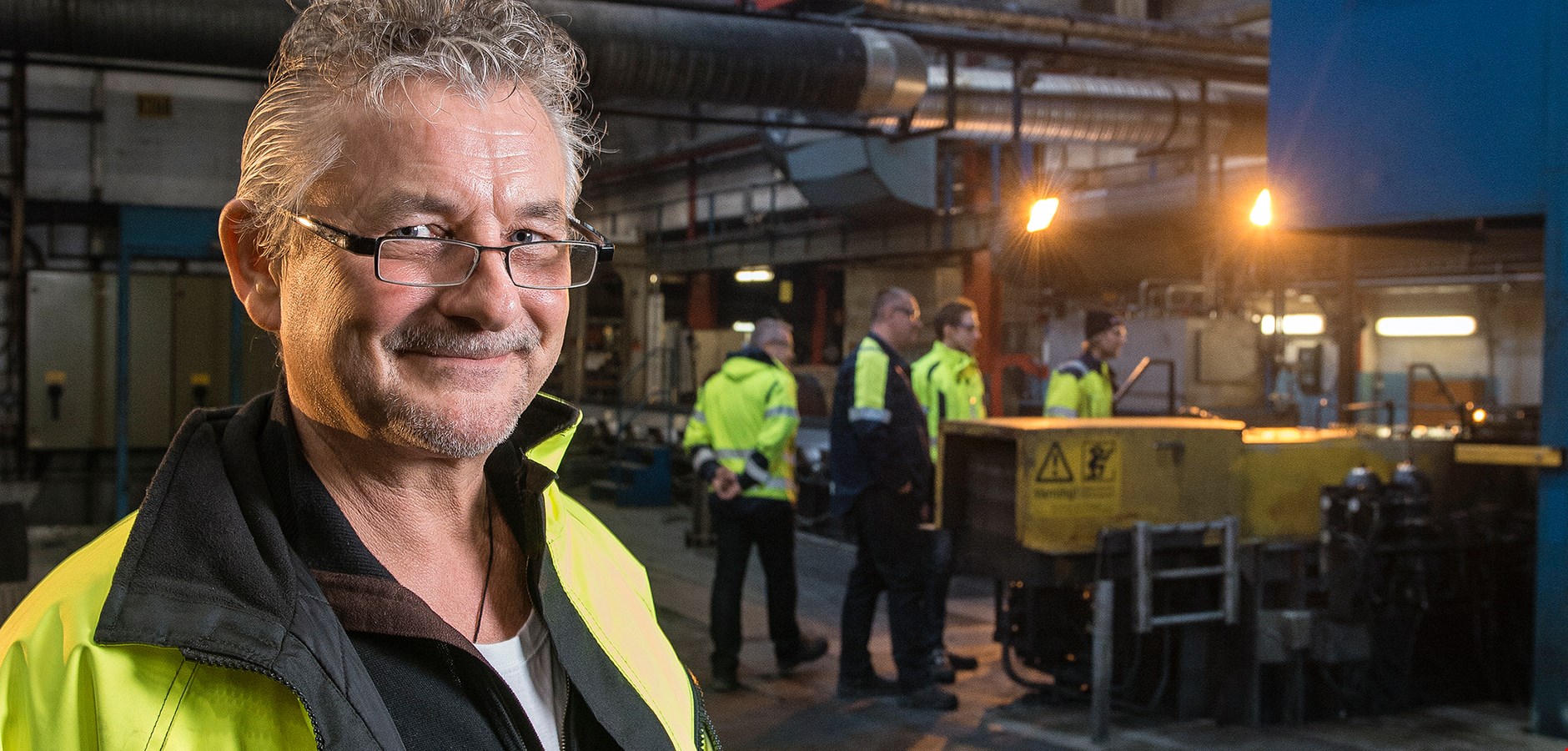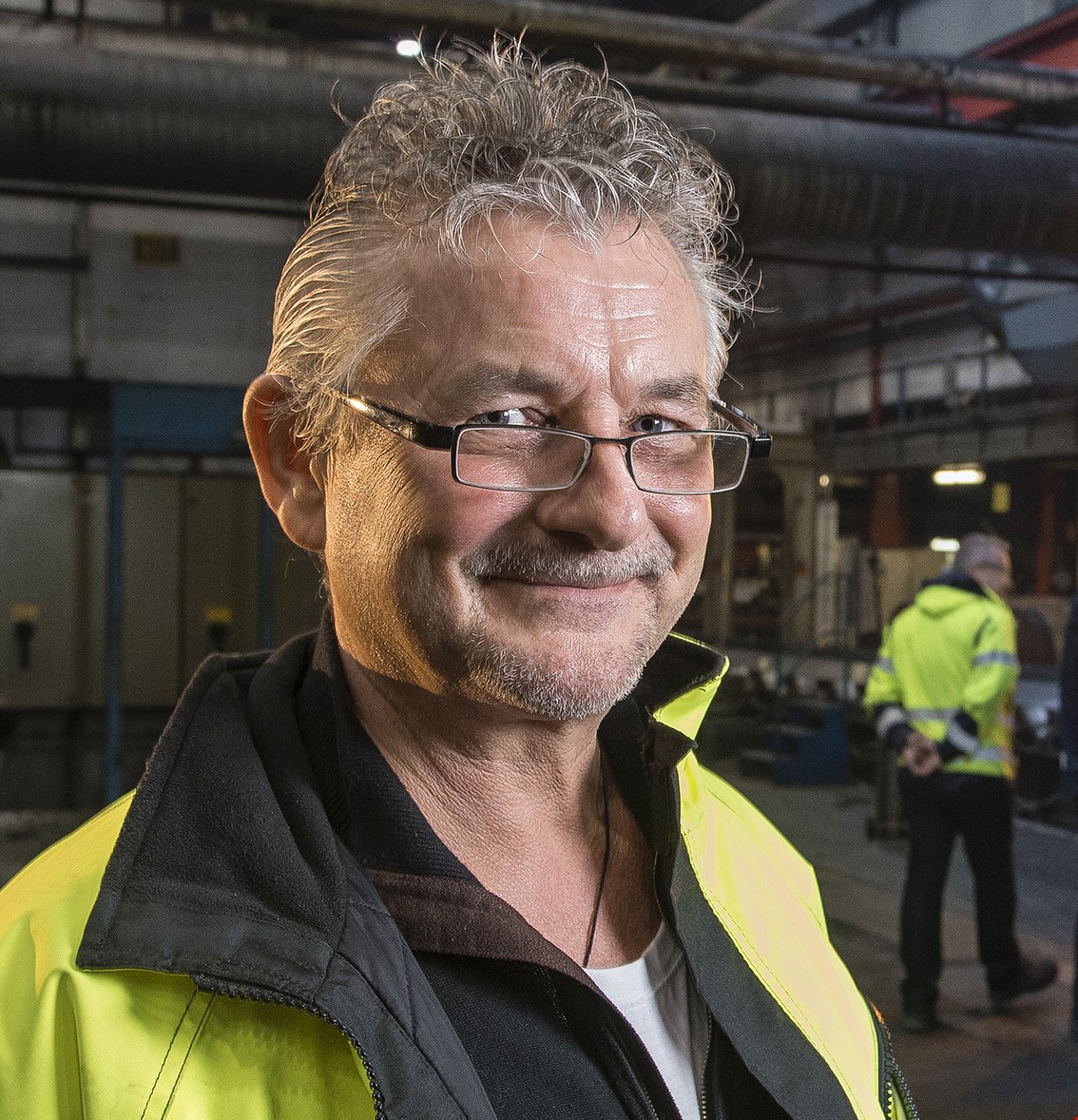Cool savings from recovered heat

The recovery of heat from exhaust gases in the hot rolling mill and new LED lighting in the rolling-mill complex. These are two of the measures that have reduced energy consumption in Finspång over the past year, helping to cut the energy bill by six million Swedish crowns.
By sharpening processes and implementing a number of energy-saving measures both at Finspång and in Shanghai, Gränges has gradually reduced the company’s overall energy consumption in recent years.
Reduced use of gas, electricity and heating has a direct positive effect on profitability, with energy the company’s third largest outlay after purchasing metal and staffing costs. The reduction is also in line with Gränges’ goal of continually working on the environmental impacts of the company’s facilities.
“We have succeeded in reducing costs at Finspång by almost SEK 6 million in 2015,”says Michael Sunström who is Production Technology Manager for the Swedish facility. “And the investments and efforts that we will be making in 2016 and 2017 will mean savings of an additional 15-16 million.”
Large efforts to decrease energy use
Between 2012 and 2015, Finspång succeeded in cutting energy use from 1.28 to 1.17 megawatt hours per tonne produced. “The goal is to make further cuts over the coming years and to reach a level of 1.09 MWh/tonne in 2017,” says Sunström. “It’s a challenging goal and it will take substantial efforts on our part to achieve it.”
The fact that interest in the environment and energy have become a natural part of the work in the whole organisation will help, according to Sunström. “Nowadays, when we consider potential process improvements at our facilities we always also look at energy improvements. It wasn’t like that previously. It’s like night and day compared to when I started with the company in 1979.”
Structured approach to find energy savings
Today, Finspång works in a structured way to find potential energy savings, by carrying out at least one major analysis of a part of the facility every year. “Whatever comes out of the analysis, or ‘mapping’ as we like to call it, becomes the plan for what we’re going to work on for the coming year,” says Sunström.
Range of activities at Gränges in Shanghai
Gränges Shanghai has undertaken a range of activities in 2015 aimed at further decreasing its energy consumption.
Utility Manager Lu Yun explains, “We have, for example, created a new standard operating procedure for our furnace operators, including decreasing open times for the furnace door, introducing a new way to skim, and using solid silicon material instead of silicon powder.”
”We have also upgraded the ventilation system as well as the control system for the workshop to achieve low energy consumption.”
During 2015 Gränges Shanghai managed to lower its electricity consumption to 946 Kw/h per tonne, its use of natural gas to 141 m3 per tonne, and its use of diesel to 2.7 litre per tonne.
“The target for our next step is to decrease electricity consumption to 930 Kw/h per tonne, natural gas to 135 m3 per tonne and diesel use to 2.5 litre per tonne,” says Lu Yun.

Exhaust gases from hot rolling mill are recovered
During 2015, Finspång implemented ten or so measures to reduce energy use. These included the recovery of heat from exhaust gases in the hot rolling mill and new LED lighting in the large rolling mill complex.
“We have good routines in place for continually reducing energy use, and to a large degree this is because we now have a 13-member energy committee, made up from staff from both production and technology, that is responsible for the issue,” says Sunström. “We meet once every second month to stay on top of the situation, something I can recommend if you’re interested in working efficiently on the issue of energy at your facility.”

 svenska
svenska
 中文(中华人民共和国)
中文(中华人民共和国)



